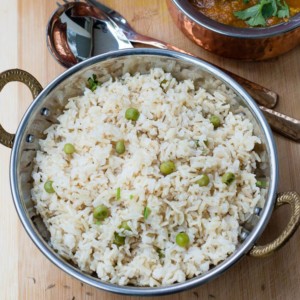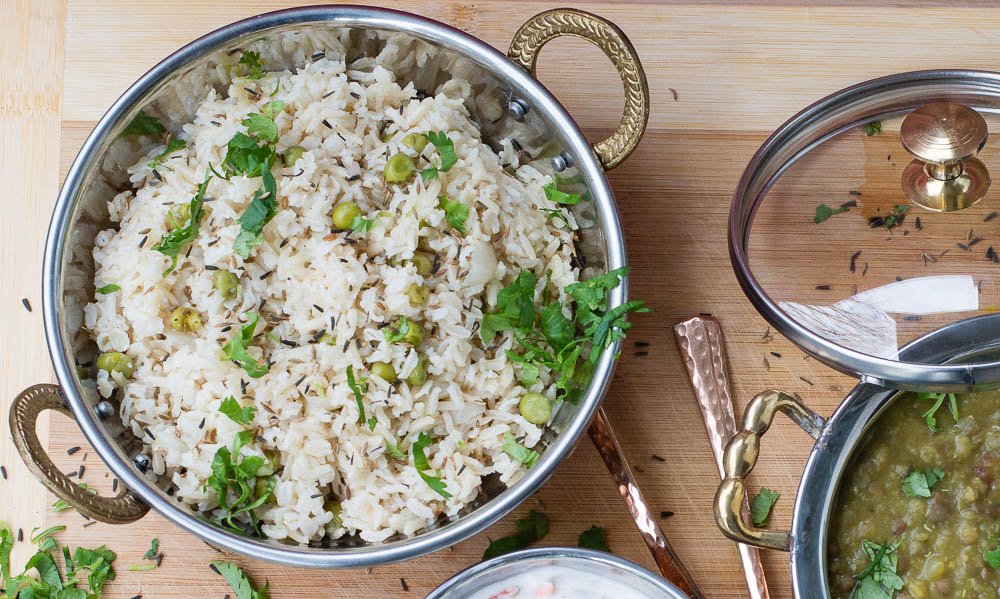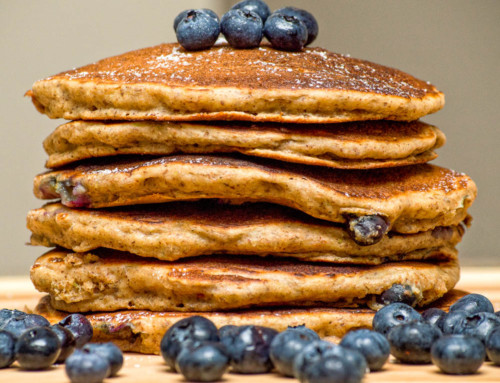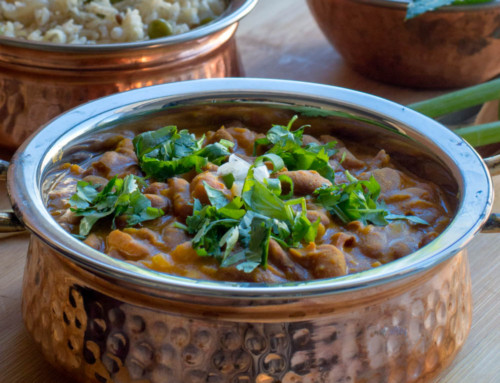What are some benefits of Brown rice (BR) over White rice (WR)?
Also, is Basmati rice better then other varieties?
In this article, we will look into the differences—in reference to overall healthy lifestyle and weight management—between White rice (WR) and Brown rice (BR). Along with a little conversation about Basmati rice in particular.
Rice comes under macronutrient—carbohydrates (carbs/CHO) category. It is also a good source of protein, containing numerous vitamins, minerals and polyphenols (depending on amount of processing).
Number of factors affect the quality of rice:
- growth conditions — soil, environment (temperature, pesticides etc); and
- processing period — BR vs. WR
Types of Rice by Size and Shape
Commercially, more then 2000 varieties of rice are cultivated around the globe. About 85% of consumed rice is in the form of polished white rice.
Long Grain rice: has grains that are long and slim. When cooked, the grains tend to remain separate, and the finished product has dry and firm consistency. Basmati rice, sticky Chinese rice and Jasmine rice falls under this category.
Medium Grain rice: Paella rice and Arbario rice (used to make Risotto) fall under this category.
Short Grain rice: Tend to be more sticky like Sushi rice.
Is one type of rice better than another?
Short answer: Yes and No, size of the grain doesn’t affect its nutrient value but here’s what does:
- Cooking times and amount of liquid used affects rice nutritional content. Heat (cooking) denatures the resistant starch—fiber. Foods with higher concentrations of resistant starch contain more digestive benefits including better glycemic index (GI), steadier blood sugar delivery and slower insulin spike. So, steamed rice would be a better option than risotto for example. Steamed rice uses less liquid than risotto, as well it is not broken down as much in the cooking process.
- More than the size, it is type of CHO present in the grain that should be considered. In reference to long grain rice, like Basmati and Jasmine; white Jasmine rice comes in different varieties, containing different GI values between 48-109. In general, white Basmati rice has a lower GI value (52-57).
- Important consideration is the growing practices, local availability, soil conditions and so on to choose the best rice for you. Freshly harvested, locally grown in rich-soil rice will trump in nutrient-quality over any grain size significance.
The Switch — Brown to White Rice
Brown rice is a natural food product and like all natural things it too goes bad—rancid. In ancient times, before development of better storage methods, irrigation advancements—it was essential to store food for leaner days. Hence, processing of rice from brown to white by removing the husk results in a longer self life.
White vs. Brown Rice
White rice is the result of removing the brain layer to yield a milled or polished product. This also strips off the bran-rich nutrients. Several cohort studies indicate that higher white rice intake is associated with elevated risk of diabetes. (Kazemzadeh et.al. 2014).
By milling and polishing brown rice and converting it to white rice, 50% fiber, 84% magnesium and 69% of total fatty acids (MUFA and PUFA) have been eliminated respectively. By law, food products must contain certain amounts of fiber, vitamins and minerals which are often added back to white rice (supplemented or “enriched”).
Brown rice is a whole grain. It contains all parts of the grain — including fiberious bran, nutritious germ and carb-rich endosperm. It is produced through removing the paddy hull (un-edible portion) and is composed of bran, endosperm, and embryo. This makes brown rice high in dietary fiber, protein and micronutrients such as iron, magnesium, zinc, manganese, selenium, B-complex vitamins and polyphenols.
Brown and white rice have similar amounts of calories and macronutrients per serving. Furthermore, the glycemic index values are only marginally different in favour for brown rice.
BUT, the glycemic load (GL) maybe drastically different.
Both the quantity (how much is eaten) and quality (nutrient content) of carbohydrates affect overall glycemic load (GL). GL is calculated by the typical amount of food eaten, how fast carbs are absorbed and broken down into glucose, resulting in an insulin spike. You always want to aim for a low GL number.
Due to the benefits of BR listed below, we naturally consume smaller portions of BR compared to WR—often half the amount. Thereby, the GL of BR is much lower than WR.
Benefits of Brown Rice
- Fiber – BR has up to four times more fiber than WR. Benefits of fiber are discussed elsewhere.
- Improved Gut flora – Fiber is beneficial towards good gut bacteria, and is liked to weight loss.
- Satiety – more filling due to greater fiber content.
- Micronutrient rich – vitamins, minerals and phytochemicals, especially from the germ
- Low glycemic index – BR produces lower blood glucose spike compared to WR. BR (boiled) has GI of 55 and GL of 18 for 1 cup. Comparable WR size contains GI of 64 and GL of 23. Low glycemic foods contain GIs of 55 or less. Glycemic load of 11-19 is a medium glycemic index food.
- Weight loss – due to the above mentioned benefits.
- Type 2 Diabetes (T2D): Sun et.al. compared data from previous studies (conducted between 1986-2006), and selected data for over 39 thousand men and 157 thousand women in reference to T2D risk and consumption of white and brown rice. Conclusion: regular consumption of white rice was associated with higher risk of T2D, whereas brown rice intake was associated with lower risk. These BR vs WR study associations were independent of lifestyle and dietary risk factors for T2D, as well as ethnicity.
Cons:
- Longer cooking time.
- Taste: BR has a nutty flavour that is both satisfying and filling but majority people prefer taste of WR.
From personal experience, you need time to become accustomed to the taste of BR and overtime develop preference over WR. Introducing children to BR early on incrementally trains flavour recognition of that food, leading to association and liking of BR over WR.
Brown Basmati vs. other types of Brown rice
Basmati Rice occupies a special place amongst all aromatic rice cultivators by virtue of its unique quality characterized by extra long slender grain, lengthwise excessive kernel elongation upon cooking, soft and fluffy texture of the cooked rice and exquisite aroma. For these reasons, it is regarded as the “King of rice”.
Basmati rice has been consciously and continuously selected by man over thousands of years for his diverse quality preference. The GI values are similar between different Basmati varieties due to their alike genetic CHO makeup.
Faster Cooking time — The wholegrain form of basmati BR is lighter in weight and quicker to cook than other brown rice counterpart.
Lower Glycemic index — Compared to other brown rice, Basmati scores lower on the glycemic index (less then 55).
Taste — This is a personal preference, and is a favourite at Science and Strength household. From personal experience, numerous of generic rice brands and types were tested, with Basmati BR resulting as a family favourite.
Cons:
Cost — Basmati is a prized grain and far more expensive than other types of BR.
Cost effective Tip:
As a cost saving solution and to lower GI value, consume other BR variety with fiber rich lentils and beans. In the stomach, overall fiber amount produces same internal benefits as Basmati BR, resulting in slow insulin release. Lentils and beans are the cheapest and most economical secret to a lean body.
Final Thoughts
Rice is a Carbohydrate/Carb/CHO that comes in a variety of types, flavours and preparations; and is a staple food in many cuisines. Scientific research states, brown rice diet compared to white rice counterpart can significantly reduce weight, waist / hip circumference, BMI and other benefits in overweight and obese individuals. Furthermore, Diastolic blood pressure significantly improved after brown rice consumption. (Kazemzadeh et.al. 2014)
For the above mentioned scientific research, a healthy lifestyle and leaner body, we at Science and Strength made the switch from WR to BR few years back. Below we share with you our quick and easy Basmati Brown Rice Recipe.
We discuss the topic of carbs, proteins, fats as well as preferred nutrients in foods, in greater detail in our The No-Diet Book. A complete chapter is dedicated to this topic under Grocery Shopping—the Modern Day Hunting and Gathering.
Brown Basmati Rice Pilaff Recipe — Easy and Delicious Side Dish
Makes 3 cups: 1/2 cup serving size – 200 calories, 6g fat, 34g carbs, 4g protein, 2g fiber
1.5 cups Brown Basmati rice
2/3 cup green peas (frozen)
1/4 cup thinly sliced white onion
1 tbsp cumin seeds
2 plus 3/4 cups water (little less then twice the rice amount)
2 tbsp Extra virgin olive oil (EVOO)
1 tsp Salt (to taste)
—
Wash and soak rice for approximately 30 minutes to speed up cooking time. Re-use this water for any possible leached out fiber, vitamins and minerals.
Heat EVOO in a pan. Add thinly sliced onion and cumin seeds. Stir for one minute or until onions slightly soften. Add water, peas and close lid bringing contents to a boil. Stir in the rice, cover and bring to boil, 3-5 minutes.
Stir, cover and reduce heat to low. Cook for 15-20 minutes until all the liquid is absorbed and rice is cooked. Don’t stir during cooking, as the rice will become mushy. Turn off heat, and leave rice covered for additional 5-10 minutes. Fluff with a fork and serve.
Store leftovers in an air tight container in fridge for up to 4 days.
Serving Suggestion: for a vegetarian option, serve alongside a curry like this Lentil and Bean Dhal.
If you like this post, please share! Thanks 🙂
References:
GI and GV: https://diabetes.ucsf.edu/sites/diabetes.ucsf.edu/files/PEDS%20Glycemic%20Index.pdf
GI of foods: http://www.glycemicindex.com/foodSearch.php
Kazemzadeh et. al. Effect of Brown Rice Consumption on Inflammatory Marker and Cardiovascular Risk Factors among Overweight and Obese Non- menopausal Female Adults. Int J Prev Med. 2014 Apr; 5(4): 478–488.
Sun et. al. White Rice, Brown Rice, and Risk of Type 2 Diabetes in US Men and Women. Arch Intern Med. 2010 June 14; 170(11): 961–969.
Vemireddy et. al. Discovery and mapping of genomic regions governing economically important traits of Basmati rice. BMC Plant Biol. 2015; 15: 207.






